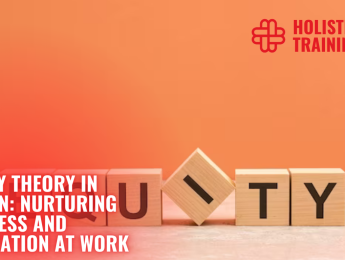Introduction
Employee loyalty is the bedrock of a thriving and successful organisation. When employees feel a deep sense of commitment and dedication towards their company, they are more likely to invest their time, energy, and talents to drive its growth. In this blog post, we will explore what employee loyalty entails, discuss its numerous benefits, and provide eleven actionable tips to help you foster and improve employee loyalty within your organisation.
What Is Employee Loyalty?
Employee loyalty refers to the level of commitment, dedication, and attachment an employee feels towards their organisation. It is a measure of their willingness to go above and beyond their job responsibilities, their motivation to contribute to the company's success, and their overall satisfaction with their work environment.
Benefits of Employee Loyalty
Employee loyalty yields numerous benefits that contribute to the long-term success and growth of an organisation. Let's delve into the advantages that come with cultivating a loyal workforce:
Increased Productivity
Loyal employees are akin to invested stakeholders, demonstrating a higher level of engagement and motivation. This heightened commitment translates into a workforce that willingly goes above and beyond job responsibilities. Employees with a deep connection to the organisation are more likely to invest discretionary effort into their work. This discretionary effort can lead to increased productivity, as loyal employees strive to achieve better results, contribute innovative ideas, and drive the overall efficiency of the company.
Greater Employee Engagement
Employee loyalty and engagement share a symbiotic relationship. Loyal employees are not just focused on their individual tasks; they are genuinely invested in the success of the organisation. This investment translates into a willingness to contribute ideas, take initiative, and actively participate in decision-making processes. The engaged workforce fosters a culture of innovation and collaboration, where employees feel a sense of ownership in the company's achievements.
Enhanced Customer Experience
Loyal employees understand the significance of providing exceptional customer service. Their commitment to the organisation's success extends to ensuring a positive experience for customers. These employees become de facto brand ambassadors, consistently delivering on customer expectations. Through their loyalty, they contribute to the organisation's reputation, ensuring satisfied customers and fostering long-term loyalty from the client base.
Higher Employee Morale
Employee loyalty creates a positive ripple effect on the overall work environment. When employees feel a deep sense of loyalty, they experience greater job satisfaction. This increased job satisfaction translates into improved morale and overall happiness within the workforce. A positive atmosphere emerges, fostering collaboration, teamwork, and a sense of belonging, all of which contribute to heightened employee well-being and sustained productivity.
Reduced Hiring Costs
Recruiting and onboarding new employees can be a resource-intensive process. Employee loyalty directly impacts organisational expenses by reducing the frequency of hiring. Loyal employees are more likely to stay with the company for the long term, minimising the need for frequent recruitment efforts. As a result, organisations experience significant cost savings associated with recruitment, onboarding, and training.
Increased Employee Advocacy
Loyal employees become powerful advocates for the organisation, both internally and externally. Internally, they speak positively about their workplace, boosting morale and fostering a positive company culture. Externally, their advocacy contributes to employer branding, attracting potential candidates and reinforcing the organisation's reputation as an employer of choice. This dual impact enhances the organisation's overall image and helps attract top talent in a competitive market.
Improved Retention
High employee turnover can be detrimental to an organisation's progress and culture. Building employee loyalty becomes a strategic approach to retaining valuable talent. Loyal employees are less inclined to actively seek opportunities elsewhere, reducing turnover rates. This, in turn, mitigates the associated costs of recruitment, onboarding, and training, providing stability and continuity to the organisation.
Positive Organisational Culture
Employee loyalty plays a pivotal role in shaping the culture of an organisation. When employees feel a deep sense of loyalty, they naturally exhibit behaviours that align with the company's values, mission, and goals. This alignment contributes to the development of a positive organisational culture characterised by trust, respect, and collaboration. Such a culture not only attracts like-minded individuals but also sustains a harmonious work environment conducive to productivity and employee satisfaction.
Improved Knowledge Retention
In today's competitive marketplace, knowledge retention is critical. Loyal employees, by virtue of their commitment and tenure, develop deep institutional knowledge. This includes an understanding of the organisation's processes, systems, and industry intricacies. By retaining these loyal employees, organisations preserve valuable institutional knowledge, mitigating the risk of knowledge gaps that may arise from frequent turnover. This knowledge continuity is a strategic advantage in maintaining competitiveness and operational efficiency.
Increased Innovation and Creativity
Loyal employees feel a profound sense of ownership and pride in their work and the organisation. This emotional connection serves as a catalyst for innovative thinking and creative problem-solving. Loyal employees are more likely to engage in continuous improvement, actively seeking solutions to challenges. The organisational environment they contribute to becomes one that encourages the generation of new ideas, ultimately fostering a culture of innovation.
In summary, the benefits of employee loyalty are multifaceted and extend across various dimensions of organisational success. From increased productivity and enhanced customer experience to positive organisational culture and improved knowledge retention, cultivating employee loyalty proves to be a strategic imperative for long-term growth and prosperity.
11 Tips to Improve Employee Loyalty at Your Organisation
Now that we understand the significance of employee loyalty, let's explore eleven actionable tips to help you cultivate and enhance loyalty within your organisation.
1. Foster a Positive Work Culture
Creating a positive work culture is fundamental to building employee loyalty. Establish an environment where open communication is not just encouraged but celebrated. Employees should feel valued and appreciated for their contributions. Recognising and celebrating achievements, big or small, contributes to a positive atmosphere. Prioritise work-life balance, promoting overall well-being among your team members.
2. Effective Leadership
Strong leadership is the bedrock of employee loyalty. Leaders must lead by example, demonstrating integrity and transparent communication. Providing guidance, support, and mentorship empowers employees and fosters trust. Involving employees in decision-making processes makes them feel heard and valued, fostering a sense of ownership and commitment.
3. Establish Clear Expectations and Goals
Clarity in job responsibilities, expectations, and performance objectives is crucial. Employees should understand how their individual contributions align with the organisation's overarching goals. Regular communication on progress and providing constructive feedback helps employees grow and feel connected to the larger purpose of the organisation.
4. Recognise and Reward Achievements
Beyond monetary rewards, implement a comprehensive recognition programme. Celebrate accomplishments publicly, acknowledging the efforts of your team members. Peer recognition also plays a vital role in creating a culture of appreciation. Feeling acknowledged and valued for their contributions strengthens the bond between employees and the organisation. In fact, according to research conducted by the Aberdeen Group, as cited by SSR, organisations implementing employee recognition programmes experienced a voluntary turnover rate that was 31% lower compared to those lacking such programmes.
5. Promote Work-Life Balance
Supporting employees' personal well-being is integral to building loyalty. Not only that but statistics also show that employees who maintain a robust work-life balance demonstrate a 21% increase in productivity. Offer flexible working arrangements, encourage breaks, and discourage excessive overtime. Respecting personal boundaries and fostering an environment that values mental and physical health sends a clear message that the organisation cares about its employees beyond their professional contributions.
6. Invest in Professional Development
Provide ample opportunities for employees to enhance their skills and knowledge. Offering training programs, workshops, conferences, and access to educational resources demonstrates a commitment to their growth. Encouraging career progression within the organisation reinforces the idea that the company is invested in its employees' long-term success.
7. Foster Team Collaboration
Encourage teamwork and collaboration by creating cross-functional projects and initiatives. Cultivate a culture of inclusivity and cooperation where employees can freely share ideas, provide feedback, and contribute to collective success. Team-building activities further strengthen relationships, fostering a sense of camaraderie among team members.
8. Encourage Employee Empowerment
Grant employees autonomy and decision-making authority whenever possible. Empower them to take ownership of their work and provide opportunities for them to contribute ideas and suggestions. Demonstrating trust in their abilities and supporting them in their professional endeavours fosters a sense of empowerment and commitment.
9. Regular Communication and Feedback
Maintain open lines of communication with employees. Provide regular updates on company news, initiatives, and progress. Encourage two-way communication, actively listen to employee feedback, and address their concerns promptly and transparently. Regularly providing constructive feedback helps employees understand their areas of improvement and contributes to their professional development.
10. Create Growth Opportunities
Offer clear paths for career advancement and professional growth within the organisation. Providing training programmes, mentorship opportunities, and a transparent promotion process instil confidence in employees about their future within the company. Employees who see a clear trajectory for advancement are more likely to remain loyal and committed.
11. Don't Make Your Organisation Worship Profit
Avoid fostering a culture solely focused on maximising profits. Research indicates that employees who perceive their organisation as having a purpose beyond financial gains exhibit a 27% higher likelihood of demonstrating loyalty. While financial success is important, prioritising profit above all else can undermine employee loyalty. Instead, cultivate an environment that values purpose, employee well-being, and ethical practices. Emphasise the organisation's broader impact and the value it brings to customers, employees, and society to foster a sense of purpose and loyalty.
By implementing these eleven tips, you can proactively enhance employee loyalty within your organisation. Remember that building loyalty is an ongoing process that requires consistent effort and attention. By fostering a positive work culture, providing effective leadership, and prioritising employee development and well-being, you can create an environment where loyalty thrives. In turn, you will reap the rewards of increased productivity, improved retention rates, and a vibrant, loyal workforce that contributes to the long-term success of your organisation.
The Influence of Employee Wellness Programmes
Employee wellness programmes have emerged as a strategic initiative for organisations aiming to enhance employee satisfaction, productivity, and loyalty. In this section, we'll explore the profound impact of wellness programmes on fostering a loyal and engaged workforce.
Holistic Well-being
Employee wellness programs extend beyond physical health, encompassing mental, emotional, and social well-being. By promoting a comprehensive approach to wellness, organisations acknowledge the interconnected nature of an employee's overall health. Initiatives such as stress management workshops, mindfulness sessions, and access to mental health resources contribute to a work environment that values the complete well-being of its employees.
Enhanced Job Satisfaction
Wellness programmes play a crucial role in boosting job satisfaction. When employees perceive that their organisation cares about their health and happiness, they are more likely to feel satisfied with their jobs. This satisfaction translates into a positive attitude towards work, fostering a sense of contentment and fulfilment. In turn, content and satisfied employees are more inclined to exhibit loyalty to the organisation that prioritises their well-being.
Increased Productivity and Engagement
A healthy employee is a productive employee. Wellness programmes that promote physical activity, proper nutrition, and mental health contribute to increased energy levels and improved focus. Engaging in regular exercise, for example, has been linked to enhanced cognitive function. As employees experience improved physical and mental well-being, they are more likely to be engaged in their work, leading to higher levels of productivity.
Reduced Absenteeism and Turnover
Investing in employee wellness can result in a significant reduction in absenteeism and turnover rates. When employees are physically and mentally healthy, they are less prone to illness and burnout, leading to fewer sick days. Additionally, employees who feel supported through wellness programmes are more likely to stay with the organisation, contributing to a reduction in turnover. This continuity is essential for organisational stability and long-term success.
Team Building and Camaraderie
Wellness programmes often include activities that promote team building and social interaction. Whether it's participating in group fitness classes, wellness challenges, or mindfulness sessions, these initiatives create opportunities for employees to connect on a personal level. The sense of camaraderie built through wellness activities extends beyond the workplace, fostering positive relationships and a supportive work community.
Attraction of Top Talent
Organisations that prioritise employee wellness send a powerful message to potential candidates. In a competitive job market, offering comprehensive wellness programmes can be a differentiator that attracts top talent. Prospective employees are increasingly seeking employers who demonstrate a commitment to their holistic well-being. By showcasing wellness initiatives, organisations not only attract talent but also set the stage for cultivating loyalty among their workforce.
Customisation for Diverse Needs
Effective wellness programmes recognise the diverse needs of employees. Offering a range of wellness options allows individuals to tailor their participation based on their preferences and requirements. This customisation acknowledges the uniqueness of each employee and demonstrates that the organisation is invested in addressing a variety of well-being dimensions, further contributing to a culture of inclusivity and support.
Data-Driven Insights for Continuous Improvement
Many modern wellness programmes leverage technology to gather data on employee participation, engagement, and health metrics. This data-driven approach provides valuable insights for organisations to refine and improve their wellness initiatives continuously. By understanding what resonates with employees and adapting programmes accordingly, organisations can ensure that their wellness efforts remain relevant and effective over time.
Table 1: Key metrics to measure employee loyalty
Metric | Description | Significance |
Retention Rates | Percentage of employees staying over time. | Indicates organisational stability and employee satisfaction. |
Employee Net Promoter Score (eNPS) | Measure of willingness to recommend workplace. | Reflects employee advocacy and overall satisfaction. |
Engagement Surveys | Regular assessments of employee satisfaction. | Provides insights into overall workplace happiness and morale. |
Attendance Patterns | Consistency in attendance and punctuality. | Indicates commitment and engagement with daily responsibilities. |
Participation in Programmes | Involvement in wellness and recognition initiatives. | Shows engagement with organisational offerings beyond job duties. |
Educational Opportunities for Health Literacy
Wellness programmes often include educational components aimed at enhancing health literacy among employees. Workshops, webinars, and resources on topics such as nutrition, stress management, and preventive care empower employees to make informed decisions about their health. Increased health literacy not only benefits individuals but also contributes to a more informed and health-conscious workforce.
Demonstration of Corporate Social Responsibility
Investing in employee wellness aligns with the principles of corporate social responsibility (CSR). Organisations that prioritise the well-being of their employees demonstrate a commitment to social and ethical values. This commitment not only enhances the organisation's reputation but also instil a sense of pride and loyalty among employees who identify with a company that values both its internal and external impact.
In summary, the influence of employee wellness programmes extends far beyond physical health. By embracing a holistic approach to employee well-being, organisations can create an environment that fosters loyalty, engagement, and overall satisfaction. Wellness programmes contribute to a positive workplace culture, reduce absenteeism, attract top talent, and position the organisation as a socially responsible employer. As organisations navigate the evolving landscape of employee expectations, the integration of comprehensive wellness programmes proves to be a strategic investment in both individual and organisational success.
Leveraging Technology for Employee Engagement
In today's digitally-driven workplace, the role of technology in enhancing employee engagement is more crucial than ever. Here’s how organisations can effectively leverage technology to foster a connected, motivated, and engaged workforce.
1. Virtual Collaboration Platforms
The advent of virtual collaboration platforms has revolutionised the way teams work together. Tools like Slack, Microsoft Teams, and Asana facilitate real-time communication, file sharing, and project collaboration, breaking down geographical barriers. By fostering seamless communication, these platforms enhance team collaboration, ensuring that employees feel connected regardless of their physical location.
2. Employee Recognition Software
Technology-enabled employee recognition programmes provide a streamlined way to acknowledge and reward outstanding performance. Platforms like Bonusly and Kazoo allow for peer-to-peer recognition, ensuring that achievements are celebrated across teams. Automated recognition systems provide instant feedback, reinforcing positive behaviours and contributing to a culture of appreciation that enhances overall job satisfaction and engagement.
3. Performance Management Systems
Modern performance management systems leverage technology to provide continuous feedback and goal tracking. Platforms like 15Five and Workday enable regular check-ins, goal setting, and performance reviews. These systems promote transparent communication between employees and managers, fostering a sense of progress and development. Employees who feel their contributions are recognised and aligned with organisational goals are more likely to stay engaged.
4. Learning Management Systems (LMS)
Investing in Learning Management Systems allows organisations to provide continuous learning opportunities for employees. Platforms such as Moodle and Cornerstone OnDemand offer a centralised hub for training modules, workshops, and educational resources. Continuous learning not only enhances employees' skills but also contributes to their sense of professional growth and development, a key factor in maintaining engagement.
5. Employee Feedback Platforms
Technology-driven employee feedback platforms, like Culture Amp and Glint, facilitate the collection of regular feedback from employees. These platforms enable organisations to gauge employee sentiment, identify areas for improvement, and implement changes promptly. The ability to provide input and see tangible results based on feedback enhances employee engagement by creating a culture of responsiveness and continuous improvement.
6. Internal Social Media Platforms
Internal social media platforms, such as Workplace by Facebook or Yammer, provide a space for employees to connect informally. These platforms foster a sense of community, allowing employees to share ideas, celebrate achievements, and engage in conversations beyond formal work channels. The informal nature of these platforms contributes to a positive organisational culture and strengthens the sense of belonging among employees.
7. Wellness Apps and Programmes
Technology plays a vital role in promoting employee wellness. Wellness apps and programmes, like Headspace and Fitbit Wellness, offer personalised resources for physical and mental well-being. By providing employees with tools to manage stress, improve fitness, and prioritise health, organisations contribute to a workforce that is not only physically healthy but also more engaged and focused on their work.
8. Employee Intranet and Knowledge Sharing Platforms
Internal communication and knowledge-sharing platforms, such as Jive or Confluence, provide a centralised repository for company information. These platforms facilitate the sharing of updates, best practices, and organisational knowledge. A well-structured intranet enhances transparency, ensuring that employees are well-informed and connected to the broader goals and happenings within the organisation.
9. Gamification Platforms
Incorporating gamification elements into work processes can boost employee engagement. Platforms like Badgeville and Bunchball allow organisations to introduce game-like features into tasks, projects, and training programmes. Gamification enhances motivation by tapping into employees' natural desire for achievement and recognition, making work more enjoyable and rewarding.
10. Virtual Team-building Activities
Technology facilitates the organisation of virtual team-building activities, especially in remote or hybrid work environments. Platforms like Zoom or Teams enable the seamless execution of virtual team-building events, fostering camaraderie among team members. Engaging in activities outside the scope of daily work promotes a positive team culture and strengthens the social bonds crucial for a motivated and connected workforce.
11. Employee Surveys and Pulse Checks
Regularly collecting feedback through technology-driven surveys and pulse checks allows organisations to gauge employee satisfaction and identify areas of concern. Platforms like SurveyMonkey and Qualtrics provide tools for creating and analysing surveys. The data collected can inform strategic decisions, demonstrating to employees that their opinions matter and contributing to a culture of inclusivity and engagement.
Leveraging technology for employee engagement goes beyond mere convenience; it is a strategic imperative for organisations aiming to create a dynamic and connected workforce. By embracing virtual collaboration tools, recognition platforms, and other technological solutions, organisations can bridge gaps, foster communication, and enhance the overall employee experience. In a rapidly evolving work landscape, organisations that harness the power of technology to drive engagement are better positioned to adapt, succeed, and cultivate a loyal and motivated workforce.
Conclusion
Building employee loyalty is an ongoing process that requires a commitment to creating a positive work culture, fostering effective leadership, and valuing employee well-being and growth. By implementing these eleven tips, you can strengthen employee loyalty, leading to increased productivity, higher retention rates, and a more vibrant and successful organisation overall. Remember, a loyal workforce is the cornerstone of success in today's competitive business landscape.


























